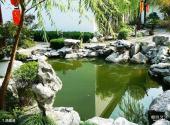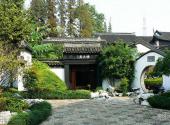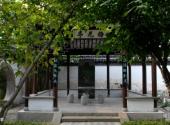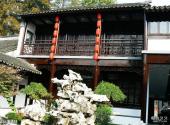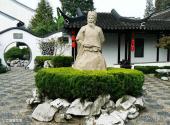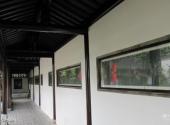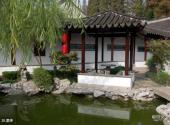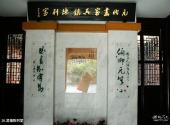
Scenic spot introduction:
The Wu Zhen Memorial Hall is located at No. 178 Huayuan Road, Weitang Town, Jiashan County. It is co-located with the Jiashan County Museum and Meihua'an Cultural Preservation Office. The whole museum covers an area of 2987 square meters and has a construction area of 1657.5 square meters. The Wuzhen Memorial Hall was built in August 2000. The Ming and Qing style buildings are in harmony with the Meihua Nunnery and the Wuzhen Tomb monuments. The pavilions, pavilions, small bridges and flowing water, plum blossoms and bamboo trees, birds singing and fish leaping in the museum, a blend of historical sites and new scenery, make it a famous cultural tourism destination in the south of the Yangtze River. Wu Zhen (1280-1354), courtesy name Zhonggui, also known as Meihua Taoren, Mei Daoren, Mei Shami, etc., was a native of Weitang, Jiashan. He was one of the four great painters of the Yuan Dynasty in my country. Wu Zhen began to study painting when he was eighteen or nineteen years old. His landscape paintings were based on the methods of Dong Yuan and Ju Ran, but he was also unique. His subjects were mostly fisherman, ink bamboo, etc. Every painting was inscribed with a poem, which people at the time called the "Three Wonders" of poetry, calligraphy and painting. Wu Zhen's main works handed down from generation to generation include "Scroll of Two junipers in the distance", "Scroll of Fisherman", "Scroll of Fisherman", "Scroll of Eight Scenes of Jiahe", "Scroll of Songquan", "Scroll of Ink Bamboo Spectrum", "Heart Sutra Volume in Cursive Script" and so on. In the history of Chinese painting, Wu Zhen is famous for living in seclusion throughout his life and being good at painting reclusive themes. In the Yuan Dynasty when literati paintings were at their peak, Wu Zhen's works were unique in style and typically reflected the unique cultural qualities of ancient Chinese literati paintings. Wu Zhen has irreplaceable value and significance in the history of Chinese painting.Attractions distribution:
The main monuments and attractions in the museum include: Plum Blossom Temple, Wu Zhen Tomb, Plum Blossom Pavilion, Bazhu Stele, Cursive Heart Sutra Stele, Plum Blossom Spring, Washing Inkstone Pond, Renbentang Ink Stele, Ancient Stone Stele, Fisherman Picture Stele Gallery, and Bamboo Score Stele. Gallery, Wuzhen Showroom, Wuzhen Sculpture Statue, Caibixuan, Hanbi Pavilion, Fan Pavilion, Linquanju, etc.Scenic spot qualifications:
National 2A-level scenic spotScenic spot features:
Photography, architectural landscape tours, historical and cultural tours, memorial hallsBest time to visit:
Best in spring and autumn. In May every year, a tourism festival is held in Nanhu, Jiaxing; from August 16th to August 19th in the lunar calendar,
the China International Qianjiang Tide Watching Festival is held in Yanguan, Haining.
Shopping recommendations:
(Local specialties) Jiashan rice wine, Jinxue brand yellow peaches, Yaozhuang mushrooms, "Dongquan" brand tomatoes, melons, Nanhu water chestnuts, dry kiln rice,
"Huilu" brand honey pears, Yangmiao snow vegetable.
(Special delicacies) Xitang Bazhen Cake, steamed pork with lotus leaves, Fenhu crabs, six tower turtles, Jiaxing rice dumplings, dragon hooves, fried snails in sauce,
Xitang Gorgon Cake.
Scenic spot location:
China>Zhejiang Province>Jiaxing City>Jiashan County>Weitang Town
How to get there:
It can be reached by taking bus No. 207 in Jiashan County.
Scenic area map:
Click to expand the scenic area map
Jiashan Museum ticket price:
The ticket price is 5 yuan.
Scenic area opening hours:
8:30—4:30

